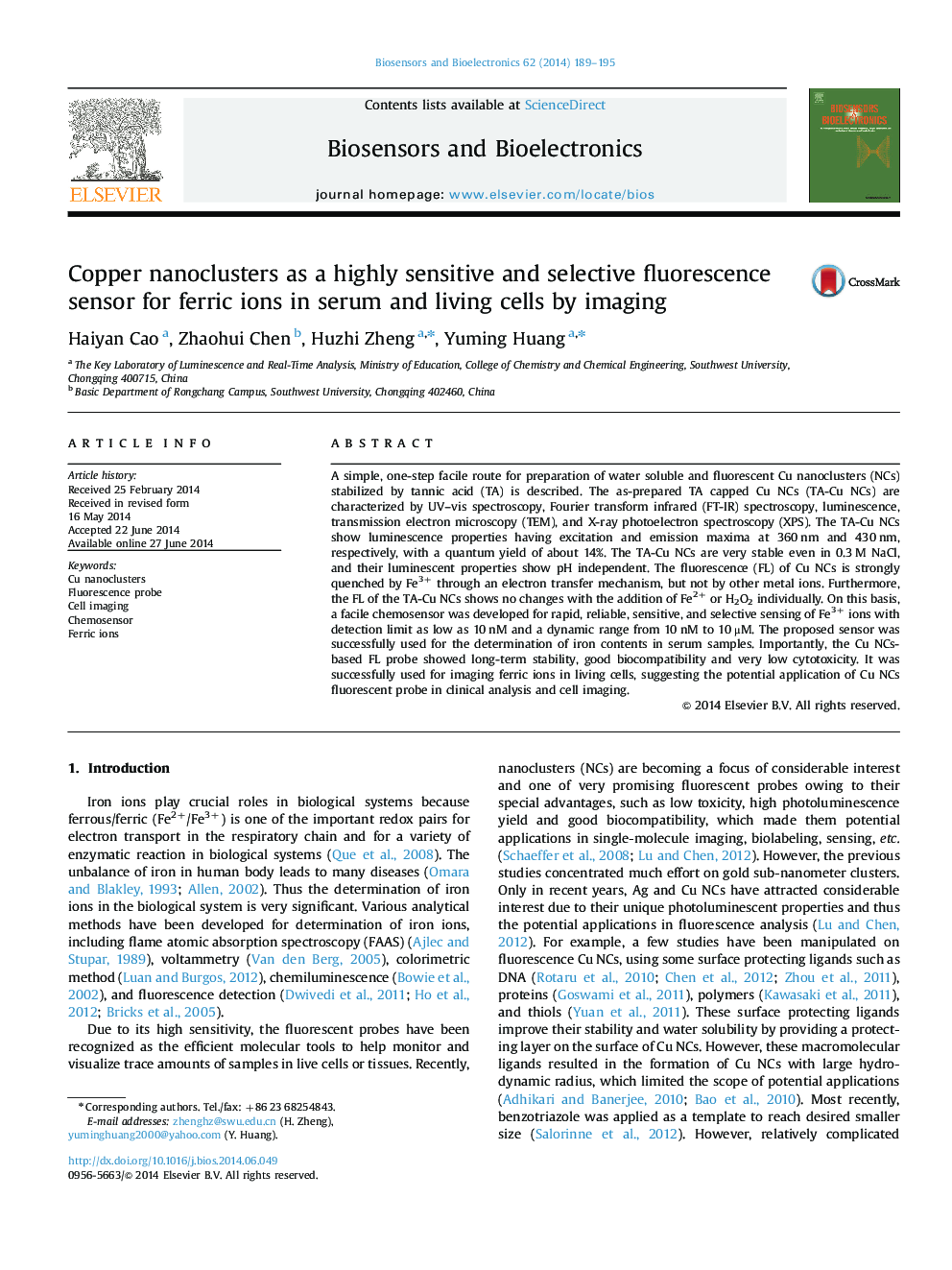| Article ID | Journal | Published Year | Pages | File Type |
|---|---|---|---|---|
| 7233038 | Biosensors and Bioelectronics | 2014 | 7 Pages |
Abstract
A simple, one-step facile route for preparation of water soluble and fluorescent Cu nanoclusters (NCs) stabilized by tannic acid (TA) is described. The as-prepared TA capped Cu NCs (TA-Cu NCs) are characterized by UV-vis spectroscopy, Fourier transform infrared (FT-IR) spectroscopy, luminescence, transmission electron microscopy (TEM), and X-ray photoelectron spectroscopy (XPS). The TA-Cu NCs show luminescence properties having excitation and emission maxima at 360 nm and 430 nm, respectively, with a quantum yield of about 14%. The TA-Cu NCs are very stable even in 0.3 M NaCl, and their luminescent properties show pH independent. The fluorescence (FL) of Cu NCs is strongly quenched by Fe3+ through an electron transfer mechanism, but not by other metal ions. Furthermore, the FL of the TA-Cu NCs shows no changes with the addition of Fe2+ or H2O2 individually. On this basis, a facile chemosensor was developed for rapid, reliable, sensitive, and selective sensing of Fe3+ ions with detection limit as low as 10 nM and a dynamic range from 10 nM to 10 μM. The proposed sensor was successfully used for the determination of iron contents in serum samples. Importantly, the Cu NCs-based FL probe showed long-term stability, good biocompatibility and very low cytotoxicity. It was successfully used for imaging ferric ions in living cells, suggesting the potential application of Cu NCs fluorescent probe in clinical analysis and cell imaging.
Related Topics
Physical Sciences and Engineering
Chemistry
Analytical Chemistry
Authors
Haiyan Cao, Zhaohui Chen, Huzhi Zheng, Yuming Huang,
